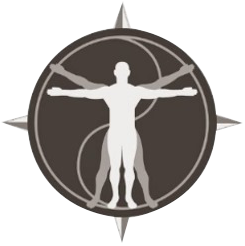Is Chiropractic Pseudoscience?

Chiropractic is a popular healthcare technique that is founded on the idea that chiropractic adjustments can be used to treat the body. Chiropractic has long been regarded as pseudoscience, yet this hasn’t prevented people from practicing it.
In reality, the popularity of Chiropractic is steadily increasing. Chiropractors are now the third largest group of primary healthcare providers in the United States, trailing only physicians and dentists. Chiropractic care is regulated in all 50 states, and chiropractors practice in 90 countries.
So, is chiropractic pseudoscience? In this article, we’ll explore the evidence for and against Chiropractic and give you our verdict on whether it’s pseudoscience.
What is Chiropractic?
Chiropractic therapy, a sort of alternative medicine, involves manual (hands-on) manipulation that enables your body to heal itself. Chiropractors treat back pain, neck discomfort, headaches, joint pain, and other health issues by making “adjustments” to the spine. A chiropractor treats chronic pain sufferers using manual therapy techniques such as subluxation-based manipulation.
Chiropractic is based on the idea that the body is made up of interrelated “organs.” As a result, it is not wholly a pseudoscientific treatment. Except for a few conditions, there is little scientific evidence to support the use of Chiropractic as a treatment.
The History of Chiropractic
Daniel David Palmer developed Chiropractic in the 1870s. There was a lot of interest at the time in spine manipulation as a kind of treatment for numerous health concerns. Palmer never conducted spinal manipulation on a single patient; instead, he learned about subluxation theory by reading books on the subject. However, Palmer applied a variety of spinal manipulative techniques to his patients and claimed that he could successfully treat back pain, headaches, and other medical conditions with spinal manipulation.
In 1895, Palmer opened the first chiropractic college, the Palmer College of Chiropractic, in Davenport, Iowa. Over time, chiropractors have become more and more convinced that subluxation is the source of all health problems. Subluxation has become a replacement for the more general term “disease” to describe the underlying causes of health problems.
The Evidence for and Against Chiropractic
Except for some kinds of back pain, there is no hard evidence that chiropractic manipulative treatment is helpful for the treatment of any medical illness.
Spinal manipulation was found to be effective for both acute and subacute neck discomfort. When spinal manipulation is paired with exercise, it is also effective for acute whiplash. When paired with exercise, spinal manipulation has been demonstrated to be useful for persistent neck pain.
Chiropractic adjustments can help treat low back pain, while most studies show only a minor benefit – equivalent to the findings of more conventional treatments. Chiropractic may help some people with back discomfort, and many excellent therapies are considerably faster and easier to obtain. Many people with back discomfort, for example, can benefit from general exercise, massage therapy, tai chi, yoga, or even resistance training.
In summary
Chiropractic is not entirely a pseudoscientific treatment. There is no scientific evidence to support the notion that subluxation is the cause of any health issues. There is also no evidence that Chiropractic can treat a wide range of health problems. However, we can claim that Chiropractic can be pretty helpful in treating back pain and other related issues.
Despite the absence of evidence, many people continue to practice Chiropractic. This is most likely due to the because appealing treatment that has the potential to be quite effective for some people suffering from back pain.
However, keep in mind that not everyone responds to chiropractic adjustments. A lot depends on your specific situation. If your symptoms do not improve after many weeks of treatment, you should see a doctor.
More articles are found here related to what is chiropractic.

